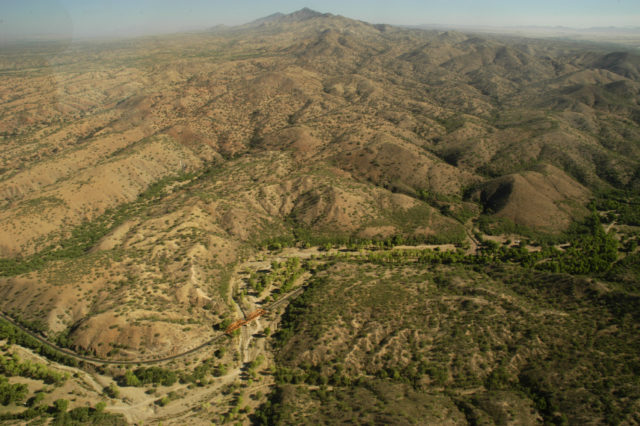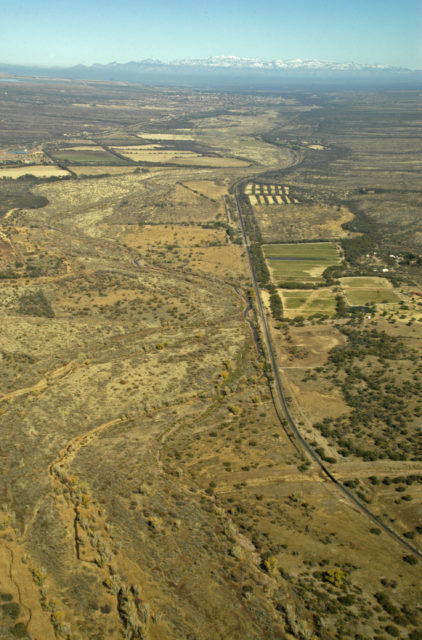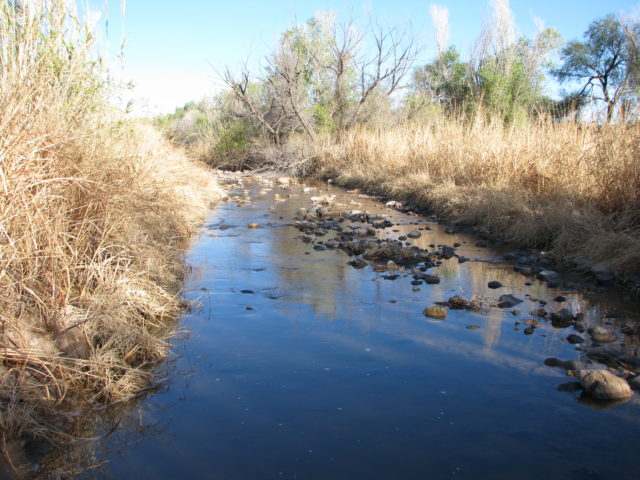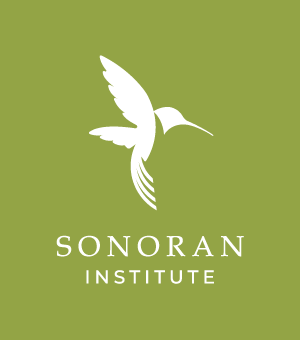A few weeks ago, the Sonoran Institute hosted a meeting of stakeholders in the Upper Santa Cruz River in southern Arizona to discuss what they value about the river. The gathering is part of an initiative we are leading to define a future vision for the river.

The Upper Santa Cruz stretches from Nogales, AZ northward to the Santa Cruz-Pima County line near Amado. This 25-mile stretch is almost entirely dependent on effluent discharged from the Nogales International Wastewater Treatment Plant, which handles sewage from both the US and Mexico.

Over the past nine years, the Sonoran Institute has been documenting the health and integrity of the river. We have shown that the Upper Santa Cruz reaps multiple benefits from having effluent in the river and that conditions have greatly improved in large part due to a 2009 upgrade of the wastewater treatment process.
However, the Upper Santa Cruz faces some significant challenges. Prolonged drought and climate change may contribute to a drying out of the river and, at the same time, an increased possibility of flooding due to higher intensity storms and lack of vegetation to slow the water down as it moves across the desert landscape.
The amount of effluent going into the river is at risk as well. Mexico has full rights to retain all of the wastewater that it currently sends to the US, which is more than two-thirds of the annual volume that is released into the river, and as of 2012 has constructed and expanded its own facilities to treat and keep its wastewater for domestic reuse in the state of Sonora.
These challenges prompted the Sonoran Institute to initiate a visioning process. Our goal is to reach agreement among concerned citizens, land owners, and other stakeholders about how we can preserve river flows.
To inform this discussion, we asked the University of Arizona’s Water Resources Research Center to develop a conceptual water budget that describes supply and demand along the Upper Santa Cruz. What we discovered is that effluent is critical to closing what would otherwise be a water supply-demand gap. We also learned that the river is running dry for extended periods just before the monsoon rains.

Lastly, we realized that continued drought and the possibility of extreme weather events (i.e., fewer but more intense rain storms) may create significant volatility or uncertainty about future water supply and demand.
While these challenges appear daunting, the good news is that we are looking to address these concerns proactively with time to reach agreement on necessary steps and take action. Additionally, the Upper Santa Cruz’s unique aquifers—a series of shallow basins that can be quickly recharged or depleted depending on water demand and weather events—makes it highly responsive to our collective actions and allows us to quickly assess their impact.
But before we can determine the steps to take, we need to have clear “end goal” in mind, which bring us back to our vision and values.
Over the next few months, we will be soliciting your ideas on what is most important to you about the Upper Santa Cruz.
Please share your thoughts by clicking below to access the survey. You also can let us know whether you’d like to be updated on the visioning process. Thanks!
Blog Post By: Jason Welborn, Sonoran Institute
Jason Welborn is a Project Manager in the Sun Corridor Program where he leads an initiative to achieve stakeholder-driven conservation goals in the Upper Santa Cruz River watershed. Jason rejoined Sonoran Institute in 2016 where he began his career developing ecological monitoring plans for federal lands from 2004-07. He also developed the vegetation monitoring component in Pima County’s national award-winning Sonoran Desert Conservation Plan. Jason holds a Master’s in Geography from the University of Arizona and a Bachelor’s in French from the University of Southern Mississippi.
